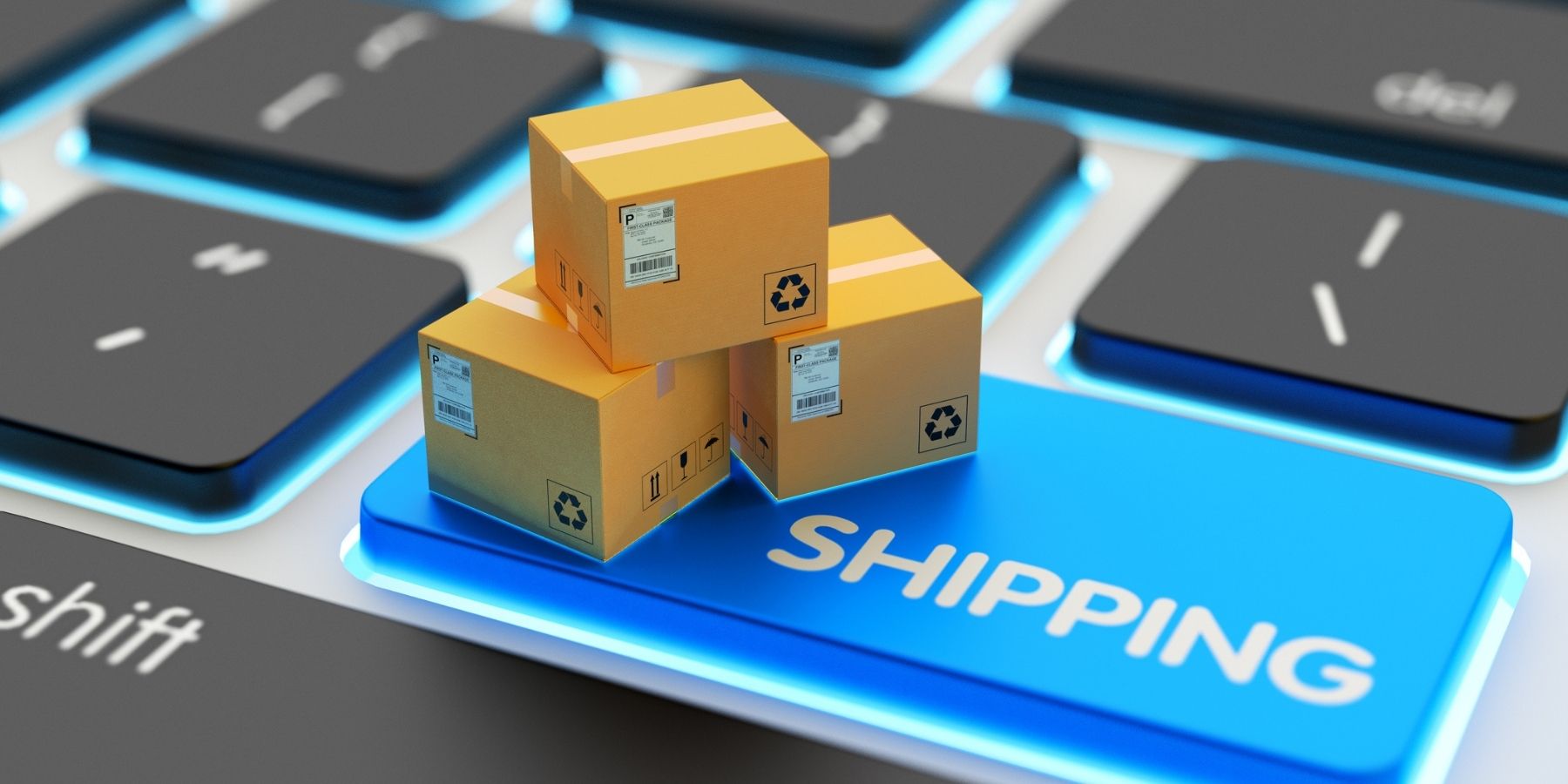45% of customers abandon their carts due to unsatisfactory shipping options on checkout. Without crucial details like shipping costs and delivery dates built into your online experience, you could lose sales.
The eCommerce landscape is chock-full of terms and concepts that are vital to a retailer’s success. With such a vast dictionary to remember, it can be difficult to sort through what they actually mean. Delivery dates, shipping dates, estimated shipment dates, and shipping speeds – if you’re not careful, you might end up confusing these common eCommerce terms with each other. And in turn, confusing your customers.
To prevent this from happening, let’s define them. Below, we’re diving deep into common date-related terms – what they mean, when you should use them, and how they might affect your shipping processes.
Top 7 Shipping Terms You Should Know
1. Ship Date
The actual date a retailer hands off a shipment to the carrier. In other words, the specific date that the order is shipped from your warehouse, store or via a drop shipper, to the customer. This is also the date from which you’d calculate time-in-transit. For example, if the ship date is Thursday, January 14th, and you’ve guaranteed overnight shipping, the item would arrive on Friday, January 15th. NOTE: On the ShipperHQ platform, the term “dispatch date” is used in place of “ship date.”
2. Order Date
An order date is the date that a customer has completed the transaction and made a purchase from you. This will often be different from a ship date since some businesses do not pick and pack items over the weekend, or have specific shipping cutoff times.
3. Estimated Shipment Date
The estimated date on which the retailer will hand off the shipment to the carrier. These dates are crucial because they are what make up your shipping lead time. This information can be a day or two off due to order fulfillment cutoffs, or the window of time that it takes for an order to be fulfilled and sent out. For most businesses, orders placed at 11:00AM versus 11:00PM will add a day to the post-order process.
What about backorders? On occasion, an order will go through for an item that is out of stock and cannot be fulfilled. When this happens, an estimated shipping time is given to let customers know when they can expect their order to be shipped.
4. Delivery Date
A delivery date is the actual date an order will be delivered to the customer. These dates are important because they give customers a much clearer idea of when to expect their package, versus the number of days in-transit.
5. Estimated Delivery Date
This term means you are making an educated guess on when order will arrive to the customer. When dates cannot be guaranteed (as is currently the case with most carriers), retailers use estimated delivery dates to communicate expectations. This is typically shown as a timeframe (i.e. March 4th-6th) instead of a specific date. If your orders are backed up and shipping delays are likely to happen, estimates help a customer plan for it. This is where accurate order tracking becomes essential.
6. Shipping Speed
Shipping speed refers to the amount of time it takes for an order to be delivered to a customer. This consumer-friendly term is more accurately called the “shipping method” or ‘estimated shipping time’ because it describes which of the carrier’s services are being used. Often, retailers define shipping speed based on “days in-transit,” for example, “Arrives in 3-5 business days.”
7. Return Date
The date a returned product arrives back to the seller. This is different from the return window, which accounts for the amount of time a customer has to return the item.

The Main Differences Between Shipping Dates and Delivery Dates
Below is a table highlighting the main differences between shipping dates and delivery dates:
| Shipping Date | Delivery Date | |
| Definition | The specific date when the retailer hands off the shipment to the carrier. It is the date the order is shipped from the warehouse or store to the customer. | The actual date when the order will be delivered to the customer’s location. |
| Calculation | Calculated based on the time it takes for the carrier to transport the shipment from the retailer to the customer. | Calculated based on the shipping speed and other factors that may affect the delivery process, such as transit time and customs clearance. |
| Importance | Helps determine the time-in-transit and sets customer expectations for when the package should arrive. | Gives customers a clear idea of when they can expect to receive their order, allowing them to plan accordingly. |
| Communication | Can be communicated to customers through ship date emails, order tracking, and delivery date notifications. | Should be communicated to customers through accurate delivery date estimates and notifications to provide transparency and build trust. |
| Customer Preference | Customers may not be as concerned about the specific ship date but are more interested in knowing the expected delivery date. | Customers highly value accurate delivery dates and are more likely to shop with retailers that provide this information. |
| Factors Affecting Calculation | Lead times, blackout dates, cut-off times, time-in-transit, holidays, weather conditions, and customs procedures. | Shipping speed, transit time, holidays, weather conditions, and customs clearance processes. |
Read more about the importance of showing accurate delivery dates to customers:
- Avoid These Common Mistakes When Calculating Delivery Date Estimates
- How Accurate Estimated Delivery Dates for Packages Boost eCommerce Success
- Delivery Date Estimates: Why They Matter and How to Get Them Right
- 6 Things that Impact Estimated Date of Delivery
Why Do These Dates Matter?
Over-communicating shipping dates and delivery dates is key to customer satisfaction in 2021
In short, they matter because customers care a lot about when their order will arrive. While customers certainly want to choose a delivery option that works for them, the thing they’re most concerned about is an accurate delivery date. In fact, 82% of customers prefer to shop with stores that show actual delivery dates, and 45% say they’d even pay more for this feature.
Your customers may not understand things like lead times and blackout dates, but they do understand delivery dates and ship dates. To be a leader in eCommerce, you must communicate these dates to them in real time. Start by sending ship date emails to your customers to let them know their order is on the way. Follow up with order tracking and delivery date notifications to seal the deal.
The Importance of Tracking Shipping Dates
From lead times, cutoff times, and blackout dates, there’s a lot that impacts your shipping dates and delivery dates.
Ship dates, estimated ship dates, delivery dates, and estimated delivery dates are all calculated on a delivery timeline. This timeline is based on specific factors relevant to the order.
Lead Times
Sometimes called production times, lead times are the dates between when an order is placed and when it ships. Depending on the products you sell and your processes, they may be as short as a few hours, or several weeks if something requires manufacturing. Having accurate lead times is crucial to accurate delivery date calculation. Inventory shortages or back ordered items also affect lead times.
Blackout Dates
These are specific dates orders will not be shipped out. Reasons could range from carrier closures to production shutdowns. But don’t be worried if you need to factor in blackout dates at checkout. Being upfront about them in your calculations will make for more satisfied customers.
Cut-Off Times
Cut-off times might entail both shipping cutoffs (sometimes called order fulfillment cutoffs) – e.g.: “Orders placed before 4pm EST will be shipped the next day.” Or, they may entail production cutoffs – e.g.: “Production for orders placed after January 15th will resume on January 18th.”
Time-in-Transit
The shipping speed for a given order will make up a big part of the delivery timeline. Of course, 2-day shipping will take the expected two days. But for more ambiguous methods, customers are relying on you to give them this information. A recent Baymard Institute study confirms that “days in-transit” shipping information is far more confusing to consumers than clear delivery dates.
Holidays & Weather
Sometimes, factors outside your control will affect the fulfillment process. You can, of course, account for holidays in advance, and build them into your schedule. Inclimate weather, however, is an unavoidable obstacle. Where possible, communicate any relevant delays expected due to weather.
Customs
If you’re shipping overseas, you’ll need to add time in customs to your delivery schedule. Because customs can be an unpredictable process, taking anywhere from a few extra days to a few weeks for orders to pass through, it may be a good idea to add a buffer to avoid missed delivery dates.
Communicating Shipping Details To Customers
More than ever, customers want and expect clear communication about the order they’ve placed. By over-communicating shipping dates and delivery date details to your customers, you can increase brand loyalty and improve your order management processes .
Armed with more information about shipping and delivery, customers will be less frustrated by your buying experience. Plus, less likely to be on the receiving end of a missed delivery. Of course, you’ll also benefit by saving money otherwise going to failed delivery fees. Let your customers know that you’re the kind of retailer that puts them first by giving them full insight into their shipment.
For retailers selling perishable items, delivery information is even more crucial. When Jeni’s Splendid Ice Creams was ready to expand their eCommerce business, they knew they’d need a shipping solution that would get products into customers’ hands quickly and accurately. After integrating with ShipperHQ, Jeni’s was able to show clear and accurate delivery dates directly within checkout.
“ShipperHQ helped us with things like delivery dates, which is especially important for customers that send Jeni’s as gifts. The last thing they want is for a loved one to receive a melted box of ice cream. Or receive an order a few days after a holiday or birthday.”
– Chelsea Clements, Former eCommerce Director at Jeni’s Splendid Ice Creams
After integrating with ShipperHQ, Jeni’s started saving more than 130 company hours per year through automated delivery date calculations.
FAQs About Shipping Dates
How can I find my shipping and delivery dates?
You can find your shipping and delivery dates by checking the information provided by the retailer or tracking your order online.
What role does the shipment’s origin and destination play?
The shipment’s origin and destination determine the gap between shipping and delivery dates based on distance, transit times, and any additional processes like customs clearance.
What if my package misses the delivery date but the shipping date was on time?
If your package misses the delivery date despite the shipping date being on time, contact the carrier or retailer to inquire about the delay and resolve any issues.
Does the chosen shipping method affect the time between shipping and delivery dates?
Yes, the chosen shipping method affects the time gap between shipping and delivery dates. Faster shipping methods result in shorter gaps compared to standard or ground shipping options.
ShipperHQ Solutions
If you’re a retailer ready to improve your shipping experience and margins, it’s time for a new partner. With ShipperHQ’s powerful Shipping Rate Management Platform, you’ll gain access to key features that will improve customer satisfaction – and conversions.
- Multi-Origin Shipping which lets you ship items from the closest location to the customer.
- Delivery Date and Time which lets customers choose an exact date and time for their delivery.
- Shipping Rules which gives you complete control of your shipping strategy at checkout.
- If you are on Magento 2, you can even go a step further with our Enhanced Checkout solution to access comprehensive order details at a glance and an Amazon-style split shipping experience.






